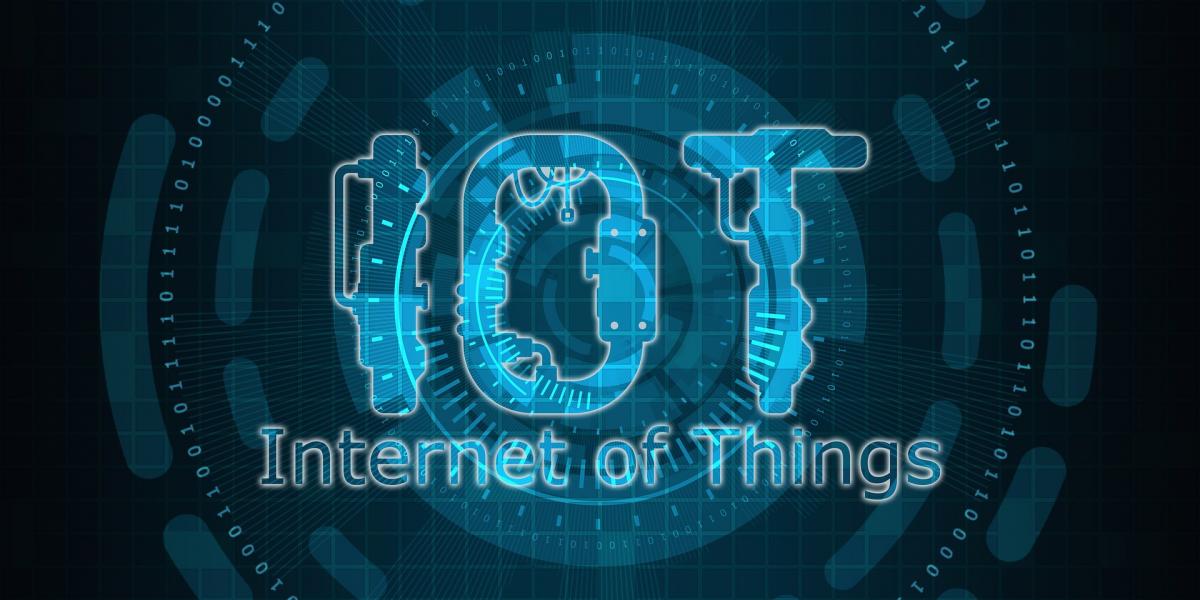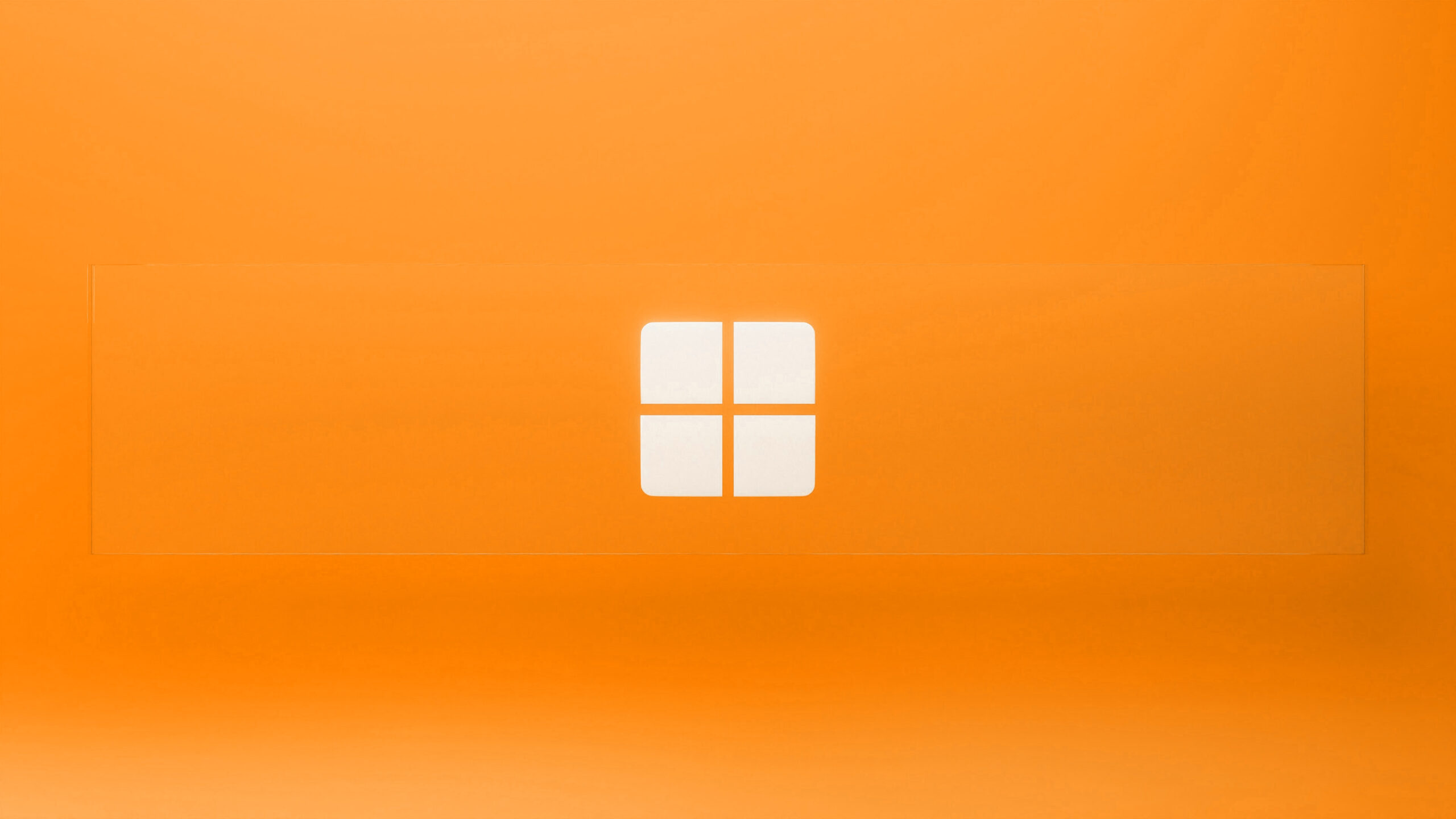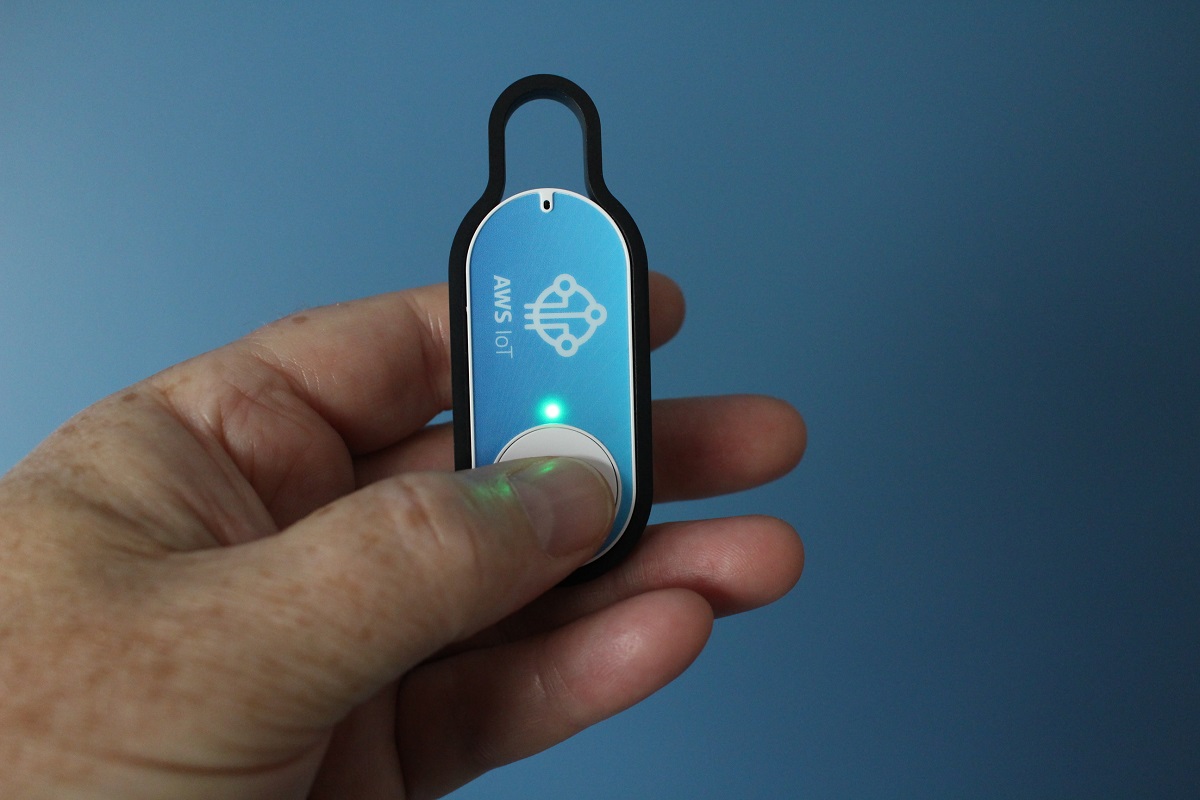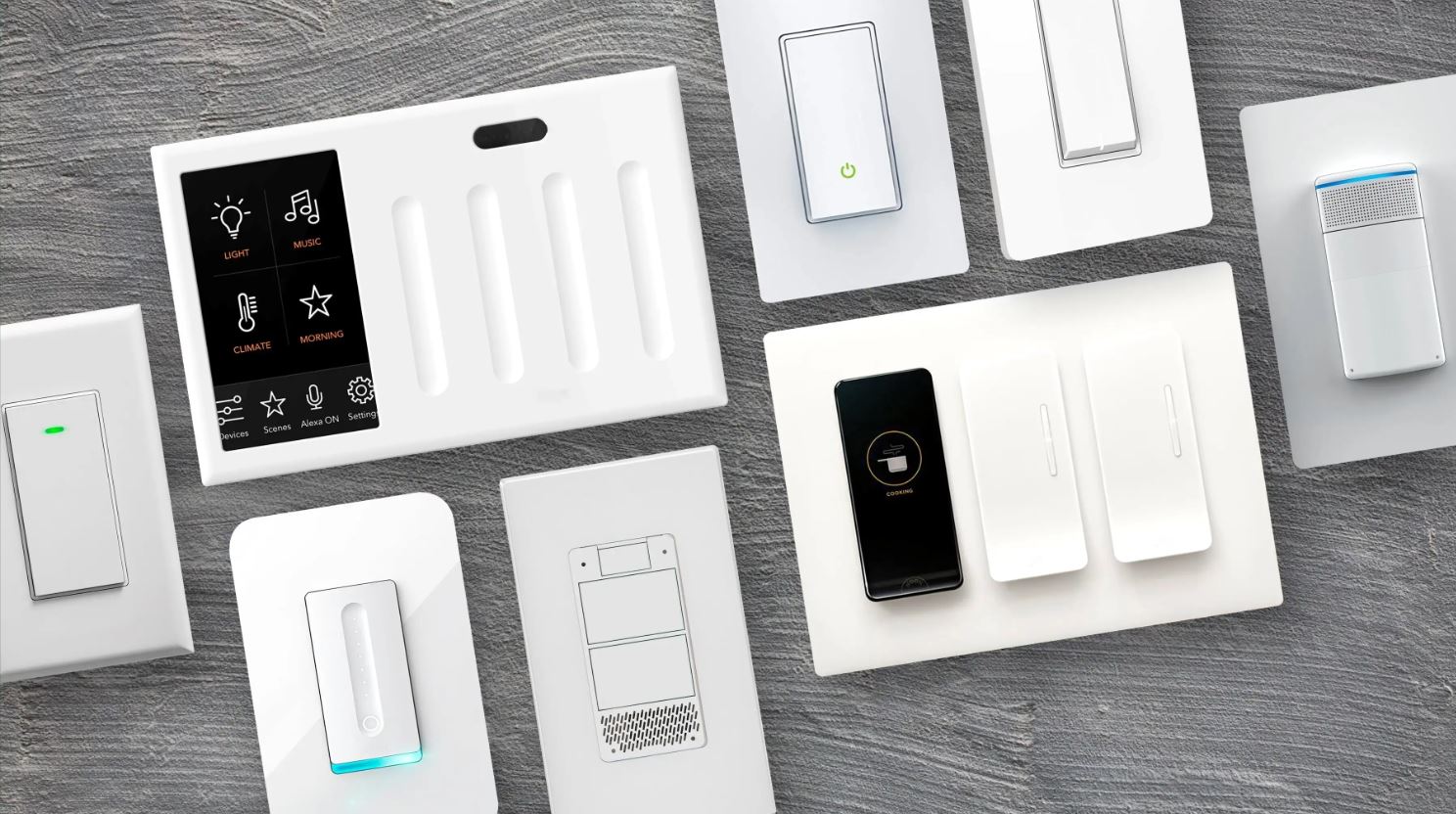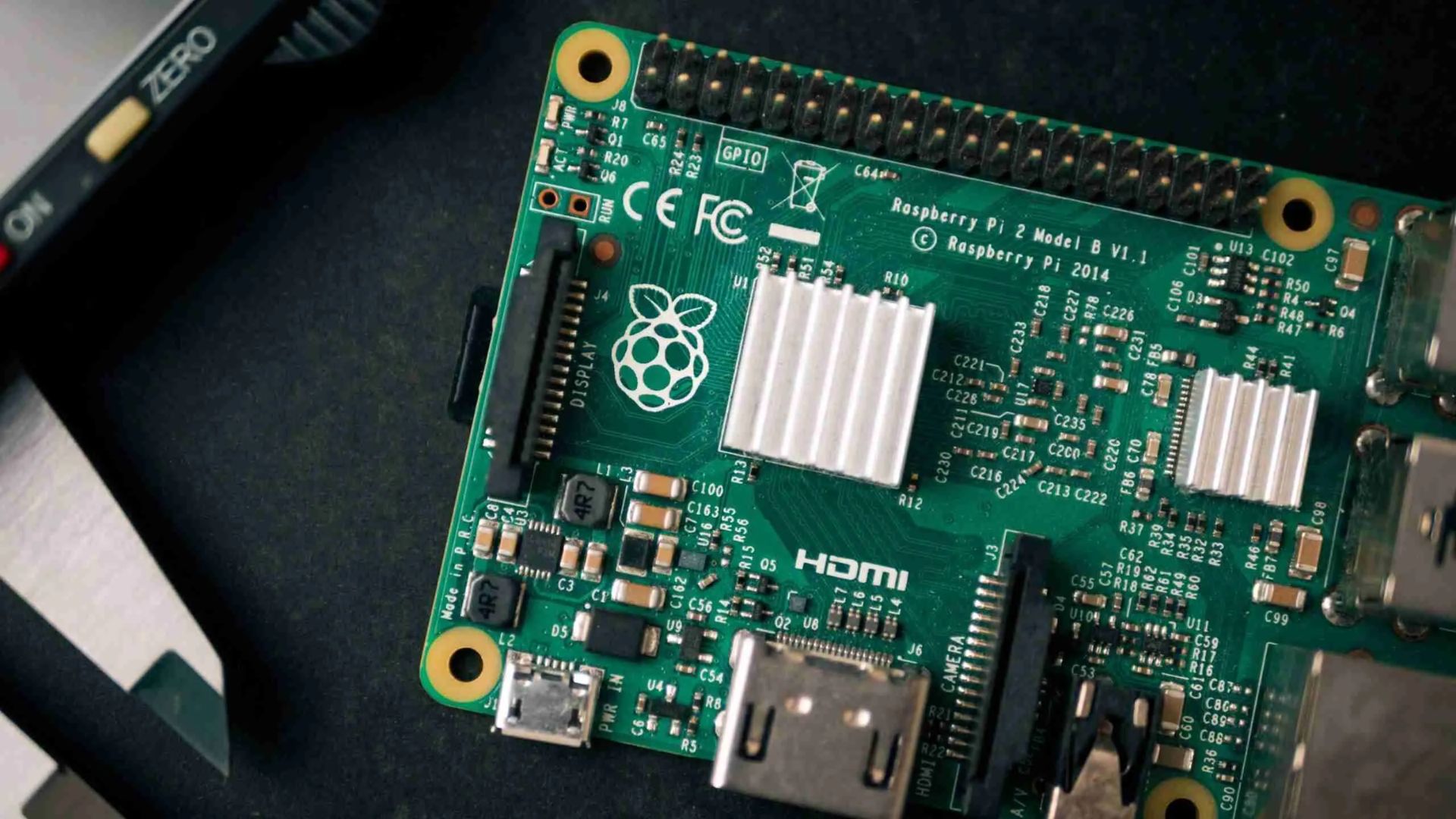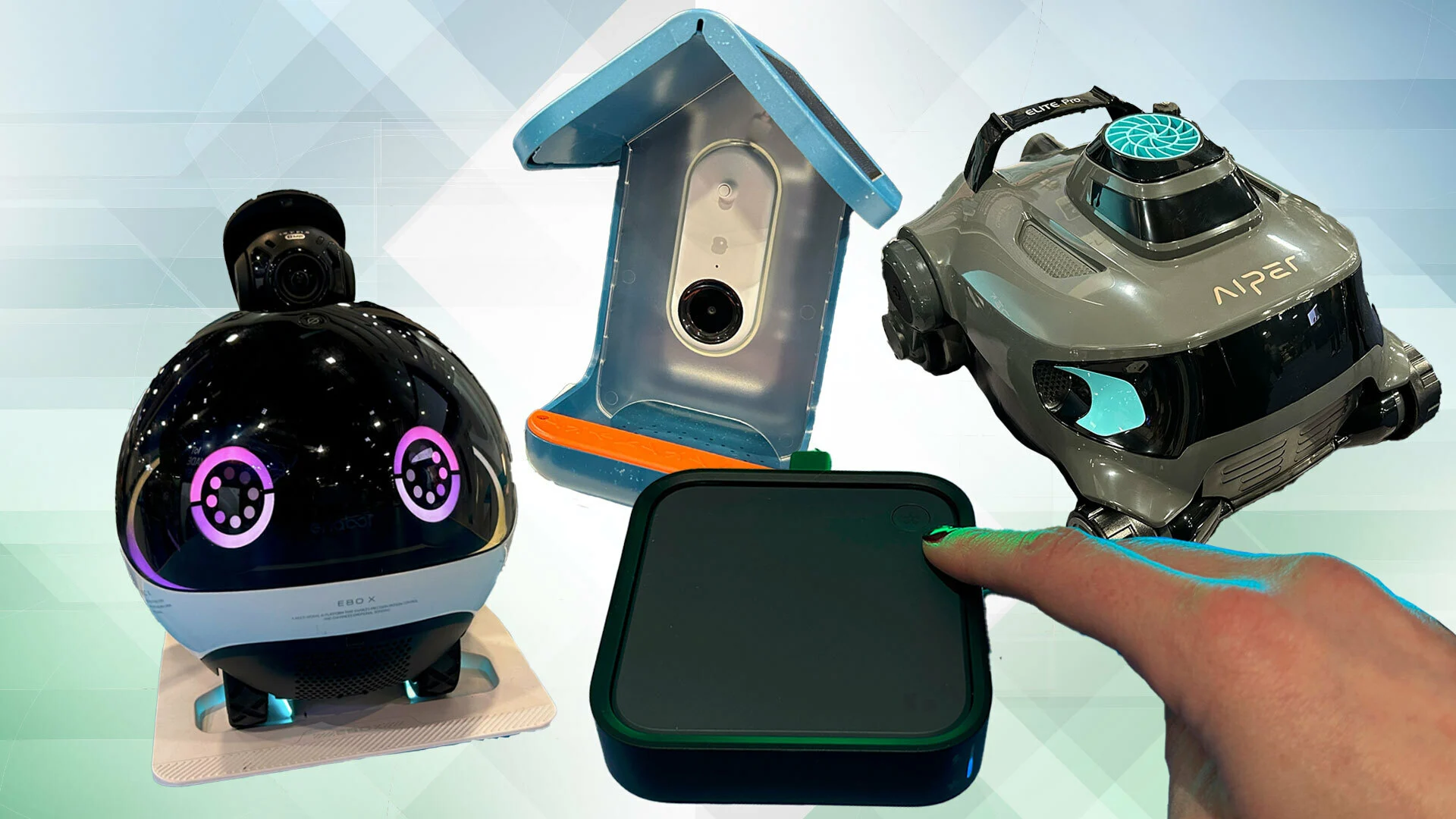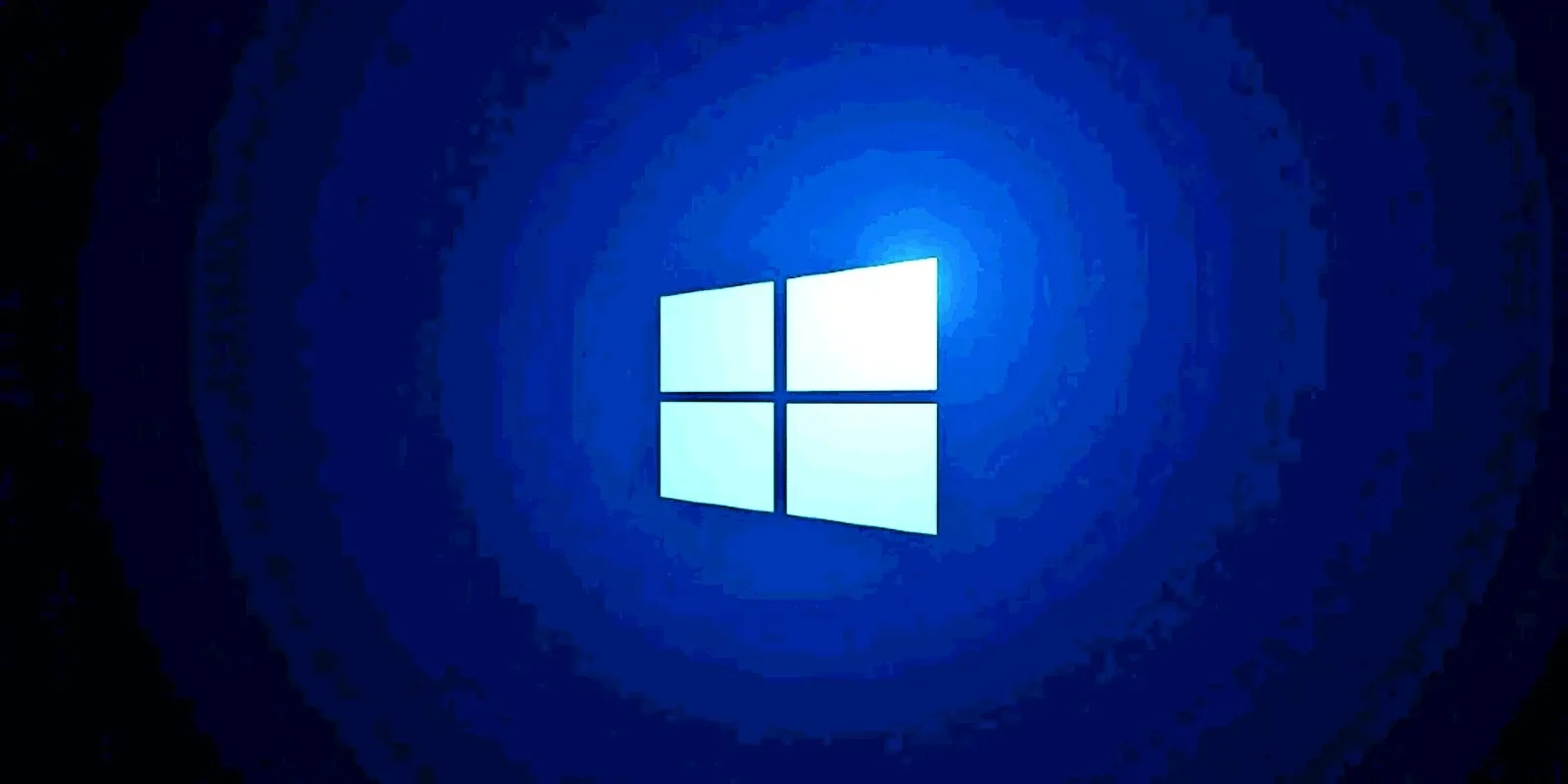What is IoT?
Internet of Things (IoT) is a concept that refers to the interconnection of various physical devices, vehicles, appliances, and other objects embedded with sensors, software, and network connectivity. These devices are capable of collecting and exchanging data, creating a network of smart devices that can work together seamlessly. The main idea behind IoT is to connect these devices to the internet and enable them to communicate with each other, humans, and cloud-based systems.
IoT enables the collection of data from a diverse range of sources, empowering businesses and individuals to make more informed decisions and take timely actions. It provides an ecosystem of connected devices that can improve efficiency, productivity, and overall quality of life.
The fundamental principle of IoT revolves around three key components: sensing, connectivity, and intelligence. Sensing refers to the ability of devices to collect data from their surroundings using various sensors such as temperature, humidity, motion, and proximity sensors. Connectivity allows these devices to establish a network and share collected data with other devices or cloud platforms. Intelligence involves the processing and analysis of data to derive meaningful insights and trigger actions.
IoT has the potential to revolutionize numerous sectors, including healthcare, transportation, agriculture, manufacturing, and smart homes. For example, in healthcare, IoT devices can continuously monitor patients’ vital signs and send alerts to healthcare professionals in case of any anomalies. In transportation, IoT can enable real-time tracking of vehicles and optimize traffic flow. In agriculture, IoT sensors can monitor soil moisture levels and trigger irrigation systems when necessary.
The widespread adoption of IoT has been driven by the advancement of communication technologies, such as 5G, which delivers faster and more reliable connectivity. Additionally, the decreasing cost of smart devices and the availability of cloud computing platforms have made it easier for businesses and individuals to embrace IoT solutions.
However, along with its benefits, IoT also presents challenges, particularly in terms of security and privacy. With a plethora of devices connected to the internet, there is an increased risk of cyber-attacks and data breaches. Ensuring robust security measures, such as encryption and authentication, is crucial to safeguard sensitive information and protect against potential threats.
In summary, IoT is a transformative concept that enables the connection of physical devices, allowing them to collect and exchange data. It has the potential to revolutionize various industries and improve efficiency and quality of life. However, addressing the security and privacy challenges associated with IoT adoption is essential to fully harness its benefits.
The Components of IoT
The Internet of Things (IoT) is comprised of several key components that work together to enable seamless communication and data exchange between devices. Understanding these components is essential for grasping the functionality and potential of IoT solutions.
1. Sensors and Actuators: These are the building blocks of IoT devices. Sensors gather data from the physical environment, measuring attributes such as temperature, pressure, light levels, and more. Actuators, on the other hand, are responsible for taking actions based on the data received. For example, an IoT-enabled thermostat can sense the temperature in a room and adjust it accordingly using an actuator.
2. Connectivity: IoT devices rely on various communication technologies to transmit and receive data. Wireless protocols like Wi-Fi, Bluetooth, Zigbee, and cellular networks enable devices to connect to the internet and exchange information with each other and cloud-based platforms. These connectivity options allow for real-time monitoring and control of devices from anywhere in the world.
3. Communication Protocols: IoT devices utilize communication protocols to establish a common language for data exchange. Standard protocols like MQTT (Message Queuing Telemetry Transport) and CoAP (Constrained Application Protocol) enable efficient and reliable communication between devices, ensuring seamless interoperability in heterogeneous IoT environments.
4. Cloud Computing: IoT generates a massive amount of data, and cloud computing plays a pivotal role in storing, processing, and analyzing this data. Cloud platforms provide the necessary infrastructure and scalability to handle the sheer volume and complexity of IoT data. They also offer advanced analytics capabilities, enabling organizations to derive meaningful insights and make data-driven decisions.
5. Data Analytics: IoT data is rich in potential insights that can drive business strategies and enhance efficiency. Data analytics techniques, such as machine learning and predictive modeling, are applied to IoT data to uncover patterns, trends, and anomalies. By harnessing the power of data analytics, organizations can optimize processes, improve predictive maintenance, and deliver personalized user experiences.
6. Applications: IoT is being leveraged across a multitude of industries to bring about transformative changes. Smart cities are using IoT to optimize traffic flow and improve sustainability. Healthcare organizations are adopting IoT devices to monitor patients remotely and enable more personalized care. Industrial sectors are implementing IoT solutions to enhance automation, increase productivity, and reduce downtime.
The components of IoT work together harmoniously to create an interconnected network of devices and systems. Through the integration of sensors, connectivity, communication protocols, cloud computing, and data analytics, IoT enables businesses and individuals to leverage data and technology to drive innovation, improve efficiency, and enhance the overall quality of life.
Sensors and Actuators
The Internet of Things (IoT) relies heavily on sensors and actuators as vital components in the ecosystem of connected devices. Sensors capture data from the physical environment, while actuators are responsible for taking actions based on that data. Together, they enable IoT devices to interact with the world around them.
Sensors
Sensors are the sensory organs of IoT devices, allowing them to perceive and measure various attributes of their surroundings. They come in different forms and types to capture data such as temperature, humidity, light, motion, pressure, and more. Some examples of commonly used sensors in IoT include:
- Temperature Sensors: These sensors measure the ambient temperature and are widely deployed in applications like smart thermostats, weather monitoring systems, and food storage units.
- Humidity Sensors: Humidity sensors measure the amount of moisture in the air, and they find applications in climate control systems, greenhouses, and industrial environments.
- Proximity Sensors: Proximity or proximity sensors detect the presence or absence of objects within a specific range. They are used in automatic doors, parking sensors, and object detection systems.
- Light Sensors: These sensors measure the intensity of light in their surroundings. They are commonly found in smart lighting systems, streetlights, and cameras.
Actuators
Actuators, on the other hand, are components that enable IoT devices to perform physical actions. They translate the digital instructions received from sensors or cloud platforms into physical movements or adjustments. Actuators can take various forms depending on their intended purpose, including:
- Motors: Motors are commonly used as actuators in many applications. They provide rotational or linear movement to perform tasks such as opening and closing doors, operating robotics arms, and controlling valves.
- Valves: Actuated valves are used in industrial systems to control the flow of fluids, gases, or other substances. These valves respond to signals from sensors or an automated control system to adjust the flow rate.
- Relays: Relays act as switches, turning on or off electrical circuits based on input signals. They find applications in home automation, HVAC systems, and security systems.
- Solenoids: Solenoids are electromagnetically operated devices that convert electrical energy into mechanical movement. They are used in applications such as door locks, automotive control systems, and appliances.
By combining sensors and actuators, IoT devices can collect data from the environment and respond accordingly. For example, a smart thermostat equipped with temperature and humidity sensors can detect changes in the environment and activate the actuator to adjust the temperature or humidity levels for optimal comfort.
Advancements in sensor technology have made them smaller, more accurate, and more affordable, allowing for their integration into a wide range of IoT applications. Actuators, on the other hand, provide the ability to physical interact with the environment and bring about meaningful changes.
In summary, sensors and actuators are the driving force behind IoT devices, enabling them to sense, collect data, and take action. The proper selection and integration of these components are essential to creating IoT solutions that effectively and efficiently respond to the needs of users and optimize various processes.
Communication Protocols in IoT
The Internet of Things (IoT) relies on communication protocols to ensure seamless and efficient data exchange between devices. These protocols establish a standardized set of rules and formats that enable devices to communicate and interoperate, forming a cohesive IoT ecosystem.
1. MQTT (Message Queuing Telemetry Transport)
MQTT is a lightweight and efficient messaging protocol designed for IoT applications with constrained devices and networks. It follows a publish-subscribe model, where messages are published to a broker and delivered to subscribers interested in receiving those messages. MQTT’s simplicity and low overhead make it suitable for remote monitoring, telemetry, and other real-time applications.
2. CoAP (Constrained Application Protocol)
CoAP is another lightweight protocol designed specifically for constrained networks and devices. It is built on top of UDP, making it suitable for resource-constrained IoT devices with limited processing power and memory. CoAP enables efficient communication between devices, with features like request-response, observe capabilities for real-time data updates, and support for RESTful architectures.
3. HTTP (Hypertext Transfer Protocol)
HTTP is one of the most widely used protocols on the internet and has been adapted for use in IoT. It enables communication between devices and web servers using a client-server model. While it offers robust functionality, HTTP is not as lightweight as MQTT or CoAP, making it more suitable for high-bandwidth, low-latency scenarios or when interacting with web-based services.
4. Zigbee
Zigbee is a wireless communication protocol designed specifically for low-power, low-data-rate applications. It operates on the IEEE 802.15.4 standard and uses a mesh network topology. Zigbee is commonly used in home automation, industrial control systems, and smart energy applications. It provides reliable and secure communication over short distances, making it ideal for localized IoT deployments.
5. Bluetooth
Bluetooth is a widely used wireless communication protocol that supports short-range communication between devices. It is commonly found in consumer electronics, healthcare devices, and smart homes. Bluetooth Low Energy (BLE), a variant of Bluetooth, is specifically designed for low-power IoT devices, offering longer battery life and reduced energy consumption.
6. LoRaWAN
LoRaWAN is a long-range, low-power wireless communication protocol designed for IoT deployments that require wide area coverage. It operates in the sub-GHz frequency band, providing long-range communication while minimizing power consumption. LoRaWAN is commonly used in applications such as smart agriculture, asset tracking, and smart cities.
7. NB-IoT (Narrowband IoT)
NB-IoT is a cellular-based communication protocol for IoT devices, operating in licensed spectrum bands. It offers low-cost, low-power, and wide area coverage, making it suitable for applications that require long-range communication and cellular network integration. NB-IoT is often used in smart metering, asset tracking, and industrial IoT deployments.
The choice of communication protocol in an IoT deployment depends on various factors such as data requirements, power constraints, network availability, and scalability needs. Each protocol has its own strengths and weaknesses, and selecting the appropriate protocol is crucial to ensure reliable and efficient communication between devices in an IoT ecosystem.
In summary, communication protocols in IoT enable devices to exchange data and interact seamlessly. The different protocols cater to a variety of IoT use cases, addressing factors like power consumption, data rates, range, and network infrastructure. Understanding and selecting the right communication protocol is essential for the success and interoperability of IoT solutions.
Cloud Computing in IoT
Cloud computing plays a critical role in the Internet of Things (IoT) by providing the necessary infrastructure, storage, and computational capabilities to support the vast amount of data generated by IoT devices. The integration of cloud computing and IoT enables scalable and flexible solutions with extensive data processing and analysis capabilities.
1. Data Storage:
IoT devices produce a tremendous amount of data, and cloud computing offers virtually limitless storage capacity to accommodate this data. Cloud storage solutions allow IoT devices to securely store and retrieve sensor data, enabling historical analysis, machine learning, and real-time decision-making based on insights derived from the accumulated data. The cloud also provides redundancy and disaster recovery mechanisms, ensuring data availability and integrity.
2. Scalability and Flexibility:
Cloud computing provides the scalability needed to accommodate the increasing number of IoT devices and the growing data volume they generate. By leveraging the cloud’s elastic infrastructure, organizations can quickly scale their IoT deployments up or down based on demand, optimizing resource allocation and cost-efficiency. Additionally, the cloud offers flexibility in terms of deploying and managing IoT applications, allowing for seamless integration with existing systems.
3. Computational Power:
Cloud platforms provide powerful computational resources, enabling the processing and analysis of large volumes of IoT data. IoT devices, which often have limited processing capabilities, can offload complex computational tasks to the cloud, benefiting from high-performance computing and machine learning algorithms. The cloud enables real-time analytics, anomaly detection, predictive maintenance, and other advanced data processing techniques, empowering organizations to derive valuable insights and enhance decision-making.
4. Integration and Interoperability:
Cloud computing provides a centralized platform for integrating and aggregating data from multiple IoT devices and sources. With IoT data residing in the cloud, it becomes easier to establish interoperability among various devices, applications, and systems. Cloud-based APIs and protocols simplify data exchange and integration, enabling seamless communication and collaboration between different IoT components and third-party services.
5. Cost-efficiency:
Cloud-based IoT solutions offer cost advantages, particularly with the pay-as-you-go model. Organizations can avoid upfront infrastructure costs by leveraging cloud resources on a subscription basis. Cloud infrastructure eliminates the need for on-premises data centers, reducing hardware maintenance, energy consumption, and operational expenses. Additionally, cloud providers offer economies of scale, making cloud-based IoT solutions more affordable and accessible for businesses of all sizes.
6. Security and Privacy:
Cloud providers invest heavily in security measures, including data encryption, access controls, and threat detection, to safeguard IoT data. Centralized cloud storage and processing allow for stronger security measures compared to storing data on individual devices. However, ensuring data privacy and compliance with regulations remains a concern. Organizations must implement robust security protocols and protocols to protect sensitive IoT data throughout its lifecycle.
In summary, cloud computing plays a pivotal role in enabling the storage, processing, and analysis of the massive amounts of data generated by IoT devices. It brings scalability, flexibility, computational power, integration capabilities, cost-efficiency, and improved security to IoT deployments. By leveraging the cloud, organizations can unlock the full potential of IoT, driving innovation and delivering valuable insights that enhance decision-making and operational efficiency.
Data Analytics in IoT
Data analytics plays a vital role in harnessing the full potential of the Internet of Things (IoT). By analyzing the vast amounts of data generated by IoT devices, organizations can uncover meaningful insights, improve decision-making, and drive innovation across various industries.
Real-time Monitoring and Alerts:
Data analytics in IoT enables real-time monitoring of sensor data to detect and respond to anomalies or events of interest. By analyzing incoming data streams, organizations can set up automated alerts and notifications to promptly address issues and mitigate risks. Real-time monitoring and alerts have applications in areas such as predictive maintenance, supply chain optimization, and security systems.
Predictive Analytics:
Predictive analytics leverages historical IoT data to forecast future events or trends. By analyzing patterns and correlations within the data, organizations can make data-driven predictions, allowing proactive decision-making and resource planning. Predictive analytics in IoT empowers organizations to optimize operations, prevent failures, and enhance customer experiences. It finds applications in demand forecasting, predictive maintenance, and personalized marketing.
Optimization and Process Improvement:
Data analytics in IoT can provide valuable insights for optimizing processes and improving efficiency. By identifying bottlenecks, performance gaps, or inefficiencies in IoT systems, organizations can make informed decisions to streamline operations. Analytics-driven optimization enables organizations to allocate resources effectively, reduce costs, and enhance productivity. It finds applications in manufacturing, logistics, and smart city management.
Machine Learning and Artificial Intelligence:
Data analytics is closely intertwined with machine learning and artificial intelligence (AI) in the realm of IoT. Machine learning models can be trained using IoT data to recognize patterns, make predictions, and automate decision-making. AI-powered analytics can detect anomalies, classify data, and enable autonomous actions based on real-time insights. Machine learning and AI in IoT have applications in smart homes, autonomous vehicles, and intelligent healthcare systems.
Data Visualization:
Data analytics in IoT is not just about processing and analyzing the data but also about presenting the findings in a visually appealing and intuitive manner. Data visualization tools and techniques help in understanding complex IoT data and communicating insights effectively to stakeholders. Visual representations like charts, graphs, and maps enable quick comprehension and facilitate decision-making across different levels of an organization.
Data Privacy and Security:
While harnessing the benefits of data analytics in IoT, organizations must also prioritize data privacy and security. Sensitive data collected by IoT devices can be at risk from cyber threats, and proper measures must be in place to ensure data protection. Data encryption, access controls, and anonymization techniques are crucial to safeguard IoT data throughout its lifecycle.
In summary, data analytics in IoT enables organizations to extract valuable insights from the vast and diverse data generated by IoT devices. Real-time monitoring, predictive analytics, optimization, machine learning, and data visualization are key components of IoT data analytics. By leveraging these techniques, organizations can optimize operations, enhance decision-making, and drive innovation in various sectors. However, ensuring data privacy and security remains a critical aspect that organizations must address when implementing data analytics in IoT.
Applications of IoT
The Internet of Things (IoT) has witnessed widespread adoption across various industries, transforming the way we live and work. The potential applications of IoT are vast and continue to expand as technology advances. Here are some key areas where IoT is making a significant impact:
1. Smart Homes:
IoT enables the creation of smart homes, where devices and appliances are interconnected to enhance convenience, comfort, and energy efficiency. IoT-enabled smart home systems allow homeowners to control lighting, temperature, security cameras, and other appliances remotely using smartphones or voice commands. Sensors and actuators provide real-time data to optimize resource usage and automate tasks, making homes more intelligent and responsive.
2. Healthcare:
In healthcare, IoT devices are revolutionizing patient care, remote monitoring, and healthcare management. Connected wearable devices can track vital signs, activity levels, and medication adherence, allowing healthcare providers to remotely monitor patients and provide personalized care. IoT-powered medical devices, such as smart insulin pumps and remote diagnostic tools, improve treatment outcomes and enable early detection of health issues.
3. Industrial Automation:
IoT is transforming the industrial landscape through its application in industrial automation. Connected devices, sensors, and machines enable predictive maintenance, real-time monitoring of production lines, and optimization of industrial processes. IoT-powered industrial automation increases productivity, reduces downtime, and improves workplace safety in sectors such as manufacturing, logistics, and oil and gas.
4. Agriculture:
In agriculture, IoT is being used to improve crop yield, monitor soil conditions, and conserve resources. Sensors placed in fields can collect data on soil moisture levels, temperature, and nutrient content, allowing farmers to make informed decisions about irrigation and fertilization. Automated crop management systems, encompassing drones, robots, and AI-driven analytics, enable precision agriculture, optimize resource usage, and enhance sustainability.
5. Smart Cities:
IoT is instrumental in the development of smart cities, where technology is employed to enhance urban living, sustainability, and resource management. Smart city initiatives include intelligent transportation systems, smart grid management, waste management, and environmental monitoring. IoT devices enable real-time data collection and analysis, improving traffic flow, reducing energy consumption, and promoting efficient use of resources.
6. Retail:
Retail businesses are leveraging IoT to enhance customer experiences, optimize inventory management, and improve operational efficiency. IoT-based solutions such as smart shelves, beacons, and facial recognition systems enable personalized marketing, real-time inventory tracking, and seamless checkout experiences. Customer behavior analytics derived from IoT data assists retailers in understanding shopping patterns and preferences.
7. Energy Management:
IoT technologies are revolutionizing energy management, enabling better monitoring and control of energy consumption. Smart meters, connected thermostats, and energy management systems provide real-time data on energy usage, allowing users to optimize consumption, reduce waste, and save costs. IoT-powered energy grids promote renewable energy integration and load balancing.
These are just a few examples of how IoT is transforming industries and our daily lives. As IoT technology continues to advance, its applications will extend to new areas, ranging from smart transportation and asset tracking to environmental conservation and healthcare innovations.
Challenges and Security in IoT
While the Internet of Things (IoT) brings numerous benefits and opportunities, it also presents several challenges, particularly in terms of security and privacy. As the number of connected devices increases and IoT adoption expands, there are critical considerations that organizations and individuals must address.
1. Security Vulnerabilities:
One of the main challenges in IoT is the security vulnerabilities that arise from the vast number of interconnected devices. Insecure device configurations, weak authentication mechanisms, and lack of standard security protocols make IoT systems susceptible to attacks. Cybercriminals can exploit these vulnerabilities to gain unauthorized access, intercept data, launch distributed denial-of-service (DDoS) attacks, or take control of IoT devices.
2. Data Privacy:
The collection and exchange of massive amounts of data in IoT raise concerns about data privacy. Personal and sensitive information can be compromised if IoT devices are insufficiently protected. Organizations and individuals must take measures to ensure that data collected by IoT devices is encrypted, stored securely, and accessed only by authorized entities. Transparent data handling practices and compliance with privacy regulations are crucial in maintaining trust among users.
3. Interoperability Challenges:
Interoperability is a challenge in IoT due to the existence of multiple communication protocols, different standards, and the proliferation of diverse devices from various manufacturers. Ensuring seamless communication and interoperability among devices from different vendors require standardized protocols and robust compatibility testing. Lack of interoperability can hinder the scalability, efficiency, and integration of IoT systems.
4. Scalability and Complexity:
As IoT networks expand, managing the scale and complexity of interconnected devices becomes more challenging. Organizations must have strategies in place to handle the exponential growth of devices, the sheer volume of data generated, and the need for efficient data processing and storage. Handling this scale and complexity involves deploying scalable infrastructure, optimizing network architecture, and adopting efficient data management practices.
5. Lack of Regulation and Standards:
The rapid evolution of IoT has outpaced the development of rigorous regulations and industry standards. This lack of regulatory frameworks and standardization can leave IoT systems vulnerable to security risks and privacy breaches. Implementing comprehensive regulations, certifications, and industry best practices can help establish a more secure and trustworthy IoT ecosystem.
6. Device Lifecycle Management:
Ensuring the security of IoT devices throughout their lifecycle is a challenge. IoT devices often have long lifespans, and manufacturers must support frequent security updates and patches to address newly discovered vulnerabilities. Additionally, the responsible disposal of IoT devices and proper data erasure are essential to mitigate the risk of unauthorized access to sensitive information.
7. Ethical Considerations:
The use of IoT technologies raises ethical concerns regarding data privacy, surveillance, and potential misuse of collected data. Organizations must establish ethical guidelines for IoT deployments, including transparent data handling practices, informed consent, and responsible data usage. Ensuring ethical considerations are taken into account can help maintain public trust and support the responsible development and use of IoT.
Addressing these challenges requires a multi-faceted approach. Collaboration among stakeholders, continuous research and development, adherence to best security practices, and investments in robust security infrastructure are essential to enhance the security and privacy of IoT systems.
Future Trends in IoT
The Internet of Things (IoT) continues to evolve rapidly, driven by advancements in technology and increasing demand for connected solutions. Looking ahead, several key trends are shaping the future of IoT, transforming industries and our daily lives.
1. 5G Connectivity:
The deployment of 5G networks is set to revolutionize IoT by enabling faster and more reliable communication. With significantly higher speeds, lower latency, and increased capacity, 5G will unlock new possibilities for IoT applications such as autonomous vehicles, smart cities, and immersive virtual reality experiences. The ultra-reliable, low-latency communication (URLLC) capabilities of 5G will also support mission-critical IoT solutions that require real-time responsiveness and reliability.
2. Edge Computing:
Edge computing is gaining prominence due to its ability to process and analyze data closer to the source, reducing latency and bandwidth requirements. By moving computing power closer to IoT devices, edge computing enables real-time and context-aware decision-making, enhancing the responsiveness and efficiency of IoT systems. Edge computing is particularly beneficial in scenarios where real-time processing is crucial, such as autonomous vehicles, industrial automation, and healthcare applications.
3. Artificial Intelligence (AI) Integration:
AI integration with IoT is driving intelligent automation and decision-making capabilities. By combining AI algorithms with IoT data, real-time insights can be gained, anomalies detected, and predictive analytics performed. AI-powered IoT applications are emerging in various domains, including predictive maintenance, smart energy management, personalized healthcare, and smart home automation. As AI technologies continue to advance, the integration of AI and IoT will become even more pervasive and transformative.
4. Blockchain for IoT Security:
Blockchain technology is increasingly being explored to enhance the security, privacy, and trustworthiness of IoT deployments. Blockchain’s decentralized and immutable nature can provide robust authentication, data integrity, and secure transactions across IoT networks. By using blockchain, IoT devices can create secure, tamper-proof ledgers of data exchanges, guaranteeing transparency and traceability. Blockchain also enables secure peer-to-peer interactions among IoT devices, reducing the reliance on centralized authority and enhancing the overall security of IoT ecosystems.
5. Integration of IoT with Augmented Reality (AR) and Virtual Reality (VR):
The integration of IoT with AR and VR has the potential to revolutionize user experiences, enabling immersive and interactive environments. IoT data can be harnessed to enhance visualizations, deliver real-time data overlays, and provide interactive elements in AR and VR applications. This integration opens up opportunities for industries such as gaming, entertainment, retail, and training and simulation.
6. Sustainability and Environmental Monitoring:
IoT is playing a critical role in addressing environmental challenges and promoting sustainability. IoT devices can monitor and optimize resource consumption, facilitate waste management, and enable efficient energy usage. Environmental monitoring solutions, such as air quality sensors and water management systems, leverage IoT to collect and analyze data, enabling better decision-making and conservation efforts. IoT’s potential to support sustainable development aligns with the increasing global focus on mitigating climate change and preserving the environment.
In summary, the future of IoT is bright and dynamic. 5G connectivity, edge computing, AI integration, blockchain for IoT security, IoT integration with AR and VR, and sustainability are key trends that will shape the future of IoT. As technology advances and new applications emerge, IoT will continue to drive innovation, enhance efficiencies, and transform industries across the globe.









